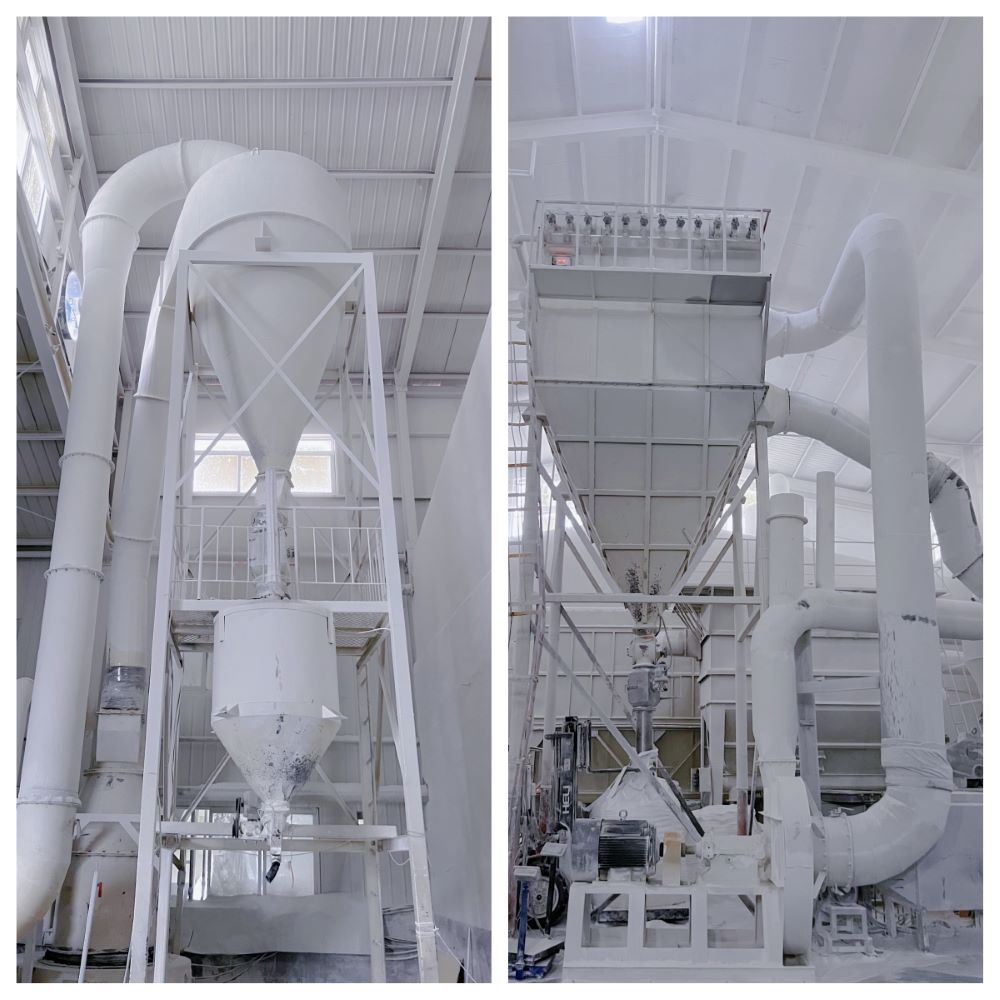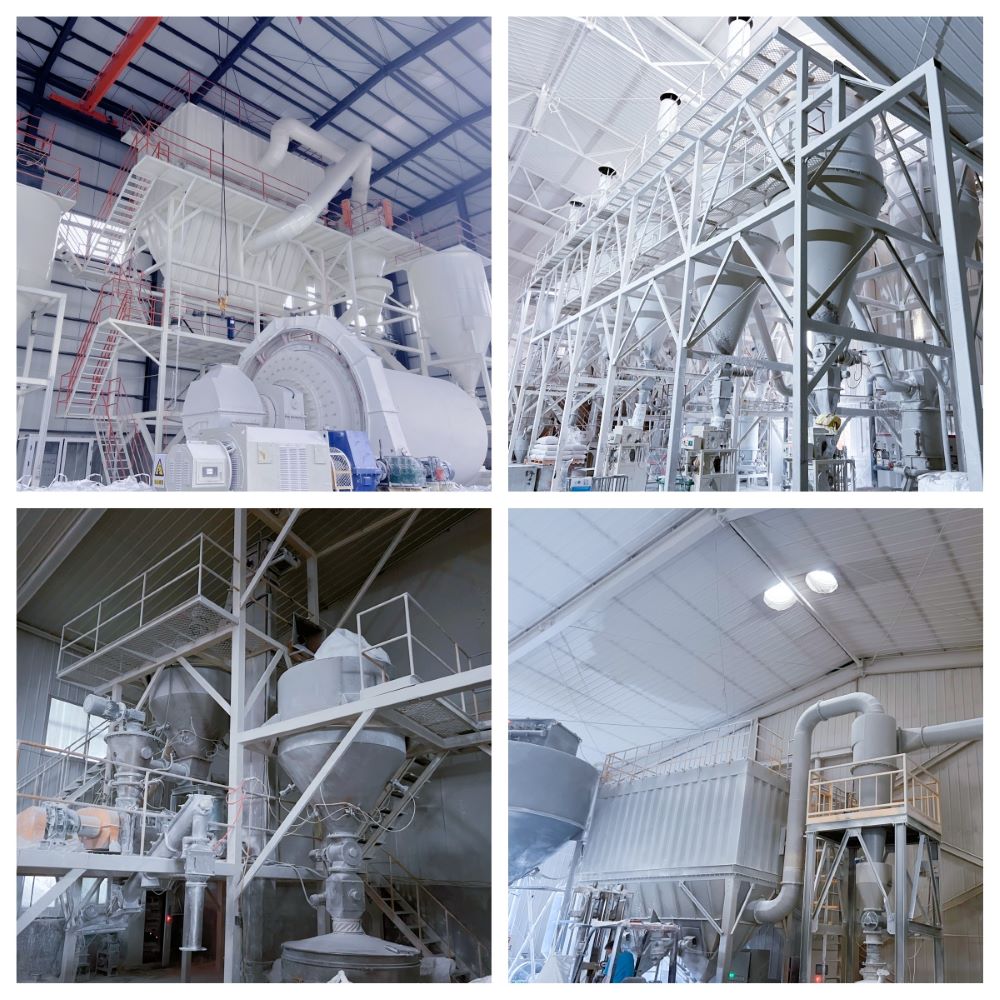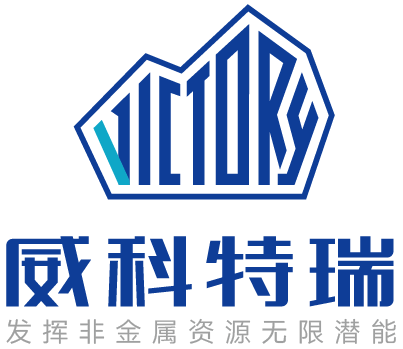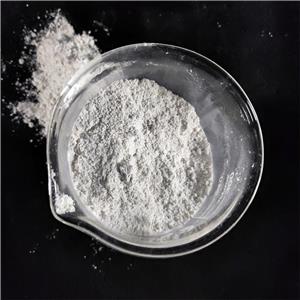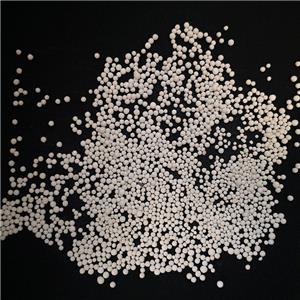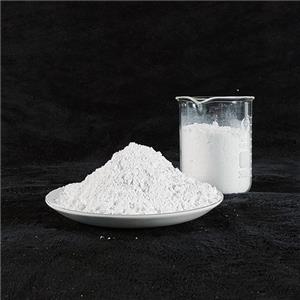To understand the surface modification of talc powder
To understand the surface modification of talc powder
Talc is a hydrated silicate with the formula 3MgO·4SiO2·H2O. Its crystal shape can be flake, leaf, needle and block.
The structure of pure talc consists of a layer of brucite (magnesium hydroxide, MgO·H2O) sandwiched between two layers of silica, which are superimposed on each other, and the adjacent talc layers are combined by weak van der Waals forces. When shear action is applied to it, it is easy to slip between layers.
Talc is inert to most chemical agents, does not decompose in contact with acid, is a poor conductor of electricity, has low thermal conductivity and high heat shock resistance, and is still not decomposed when heated to a high temperature of 900℃.These excellent properties of talc make it a good filler, widely used in the field of plastics and coatings, but the hydrophilic surface of talc powder makes its application in some hydrophobic zones limited, in order to further improve its performance and broaden its application, surface modification must be carried out.
Commonly used surface modifiers for talc powder
In order to make talc powder better combined with polymers, there are two main categories of modifiers used for modification:
Coupling agents: Mainly titanates, aluminates, silanes and stearates, the most commonly used is titanates, whose molecular structure is R´-O-Ti- (O-X-R-Y) n, where R´O- can act on the chemical structure of the surface of the filler, and R is a long chain tangle group with a fatty or aromatic structure, which can improve the compatibility between the polymer and the filler. Y is an active reactive group, which can be used for crosslinking or bonding in polymer-filled systems. In short, one group of the coupling agent reacts with the surface of the talc powder to bond, and the other group participates in the polymerization reaction of the polymer to bond with the polymer, so that the coupling agent acts as a bridge to bind the two.
Surfactants: mainly sodium dodecyl benzene sulfonate, sodium dodecyl sulfonate, dodecyl trimethyl ammonium bromide, dodecyl trimethyl chloride, sodium alkenyl sulfonate, etc., which improves the compatibility between the polymer and the filler and the coupling agent is the same, but the mechanism of binding with the filler surface is different from that of the coupling agent. As we all know, the surface of inorganic particles is charged, and according to the charged properties of particles, the surface charged properties of inorganic particles are also different with the pH value of the solution. When the pH value of the solution is greater than the ZETA isoelectric point of inorganic particles, the surface of the particles is negatively charged, and the particles can adsorb cationic surfactants. When the pH value is less than the ZETA isoelectric point, anionic surfactants can be adsorbed. The function of surfactants on the surface of ions is accomplished by ion exchange, the formation of ion pairs, and the formation of hydrophobic bonds. However, the adsorption of surfactant to polymer is not very good, generally by adsorption monomer and then polymerization to form microcapsule coating.
Talc surface modification method
Modification methods at home and abroad can be roughly divided into 6 kinds:
Surface coating modification: Coating the surface of the surfactant on the surface of the particle to give the particle surface new properties, a more common method today.
Mechanochemical method: A modification method that enhances the surface activity of particles by grinding, friction, etc. This method is to make the relatively large particles smaller by crushing, friction and other methods, in this process, the surface activity of the particles becomes larger, that is, the surface adsorption capacity is enhanced, and it is easy to adsorb other substances, so that the process is simplified, the cost is reduced, and the quality of the product is easy to control. For example, some of the old talc powder is enhanced by the method of small particles to enhance its surface activity, and then mixed with acrylic modified PP material or PP and PE blend, the reinforcement material is generally used in automobile bumpers, engine parts, air conditioning parts, instrument panels and other industrial accessories, of which talc powder is generally not surface treated. In China, the talc with the particle size of 16.5μm is crushed in the stirring mill and coated with silane coupling agent to achieve the purpose of modification.
Modification of the outer film layer: A method of uniformly coating the surface of a particle with a layer of polymer, thereby changing the surface properties of the particle. For talc powder, it can be firstly pulverized and activated, then adsorbed surfactant under certain conditions, and then adsorbed monomer by surfactant, and finally polymerized monomer to achieve surface coating effect.
Local active modification: The use of chemical reactions to graft different functional groups on the surface of particles to achieve the purpose of surface modification.
High energy surface modification: The use of high-energy discharge, ultraviolet, plasma rays to modify the surface of particles. This method is to modify the surface of particles by using the huge energy generated by high-energy discharge, ultraviolet ray, plasma ray, etc., so that the surface is active. Improve the compatibility of particles and polymers.
Modification by precipitation reaction: modification by precipitation reaction. This method is to use the precipitation effect to coat the particle surface, so as to achieve the effect of modification.
